The U.S. is host to a number of enviable mining jurisdictions, both in terms of geological endowment and investment attractiveness. Nevada is perhaps most well-known, with Alaska a close runner-up. Idaho is also emerging as a desirable destination for developers. We present eight companies exploring, developing and operating within the U.S.
Americas Gold and Silver
Americas Gold and Silver (TSX: USA; NYSE: USAS) is a precious metals producer operating in the Americas. The company’s producing mines include the Cosala operations in Sinaloa, Mexico as well as the Galena complex in Idaho. Other assets include the Relief Canyon development project in Nevada as well as the San Felipe property in Mexico. Americas Gold and Silver is working to substantially grow its metals production by next year.
Last year, company-wide production guidance was for 6.6 million oz. to 7 million oz. of silver-equivalent at all-in sustaining costs of US$10 to US$12 per oz. silver.
The Cosala complex is the main source of the company’s silver production. The 194-sq.-km property features a central processing facility, the San Rafael underground mine, El Cajon project as well as past-producing mines and mineralized showings. In the third quarter, the San Rafael mine produced 3.6 million silver-equivalent oz. In January, the company reported an illegal blockade by a minority of its unionized workers at Cosala. The company has filed legal motions with the Mexican government and temporarily stopped mining and processing operations at the site.
As of December, the 117-sq.-km Relief Canyon project was in the final stages of construction with initial crushed ore stacked on the heap leach pads and commercial production expected in the first half of the year. A 2018 feasibility study for the project outlined an open pit producing 91,000 oz. of gold annually over a six-year mine life at all-in sustaining costs of US$801 per ounce. Proven and probable reserves for this asset stand at 27.2 million tonnes grading 0.75 gram gold per tonne for a total of 653,000 ounces.
Americas Gold and Silver acquired the Relief Canyon and Galena assets as part of its Pershing Gold acquisition announced in September 2018.
In September 2019, the company announced a strategic 60-40 joint venture agreement with Eric Sprott for the Galena complex to recapitalize the operation through increasing production and lowering costs. Starting in October, Sprott invested US$15 million for capital improvements with a further US$5 million committed to fund the first year of operations to earn a 40% interest in the complex.
Americas Gold and Silver has a $308-million market capitalization.
Avidian Gold
Avidian Gold (TSXV: AVG) is an exploration company focused on its 106-sq.-km Golden Zone and 15-sq.-km Amanita properties in Alaska, a top-ranked mining jurisdiction.
The Amanita property is located 15 km northeast of Fairbanks and is contiguous with Kinross Gold’s (TSX: K, NYSE: KGC) Fort Knox mine. The company says the Tonsina structural corridor found at Fort Knox continues onto Amanita; historical drilling along this trend intercepted oxide gold mineralization from surface to a depth of over 150 metres.
Trenching within the 4-km long Tonsina corridor last year returned 94.5 metres of 3.04 grams gold per tonne as well as 27 metres of 4.22 grams gold per tonne.
The Golden Zone property is located 320 km north of Anchorage and features high-grade gold and base metal mineralization spatially related to shallow intrusions which extends over 15 km of strike. The property sits within the prolific Tintina gold belt with gold-dominated showings contained within three corridors. Avidian has identified a number of gold-copper exploration targets at the site.
The Breccia pipe deposit at Golden Zone features indicated resources of 4.2 million tonnes grading 1.99 grams gold per tonne for a total of 267,400 oz. with additional inferred resources of 1.4 million tonnes at 0.83 gram gold for a total of 35,900 ounces.
Last year’s exploration work at Golden Zone also extended the strike length of the JJ-J4 zone discovery to in excess of 750 metres while mapping and compilation work at the Copper King area increased its mineralized strike to over 1.5 km.
This year, Avidian plans to complete additional trenching at Amanita to continue extending the surface footprint of the mineralization, to be followed by drilling of these targets. At Golden zone, additional field work is planned to define future drill sites.
In addition, the company holds the Jungo project within Nevada’s Humboldt district as well as a 59% interest in High Tide Resources. High Tide Resources is a private company that has the option to earn a 100% interest in the Labrador West iron ore project, located 17 km west of Iron Ore Company of Canada’s Carol Lake mine and in the Black Raven gold asset in Newfoundland. High Tide also wholly owns the Strickland base metal property in Newfoundland and Labrador.
Avidian became a publicly listed company in December 2017. It was founded as a private entity in 2011.
Avidian Gold has a $13-million market capitalization.
NovaGold
NovaGold Resources (TSX, NYSE: NG) is focused on developing the Donlin gold project in Alaska. Donlin, a 50-50 partnership between Barrick Gold (TSX: ABX; NYSE: GOLD) and NovaGold, features total reserves of 504.8 million tonnes grading 2.09 grams gold per tonne for a total of 33.8 million ounces. The federally-permitted project is undergoing technical studies in advance of a construction decision.
In February, the company announced that it received final state approvals for a buried natural gas pipeline and transportation facilities at Donlin.
A 2011 feasibility study for the project suggested a 440,000 tonne per day open pit mine with a 53,500 tonne per day crusher, producing a refractory sulphur concentrate that would be treated in a pressure oxidation circuit before cyanidation. The resulting mine would produce an average of 1.1 million oz. of gold annually over a 27-year life with life of mine operating costs of US$581 per ounce. The total estimated capital cost for the project was pegged at US$6.7 billion, including contingency. Using a gold price of US$1,200 per oz., the project’s net present value came in at US$547 million, using a 5% discount rate.
Current reserves and resources at Donlin are contained within 3 km of an 8-km long mineralized trend; the company has identified additional targets within this trend.
As of the end of 2019, NovaGold had US$149 million in cash with additional receivables pending. The company expects to receive US$100 million over the next three years in deferred proceeds from the sale of the Galore Creek project with a further US$75 million expected upon construction approval of this project, jointly owned between Newmont (TSX: NGT; NYSE: NEM) and Teck (TSX: TECK.B; NYSE: TECK).
This year, US$20 million is planned for the Donlin project with 22,000 metres of drilling scheduled to test the extensions of high-grade gold zones. Additional work is ongoing to collect geotechnical data for engineering work on the proposed tailings facility and water diversion and retention structures, as required for the dam safety certification application to the state.
NovaGold has a $3-billion market capitalization.
NuLegacy Gold

A drill rig at NuLegacy Gold’s Red Hill gold project in Nevada. Credit: NuLegacy Gold.
NuLegacy Gold (TSXV: NUG; OTC: NULGF) is focused on gold exploration within Nevada’s Cortez trend. The company’s 108-sq.-km Red Hill project is located on strike with Barrick Gold’s (TSX: ABX, NYSE: GOLD) Cortez complex and Goldrush project.
Exploration work completed in 2017 and 2018 confirmed structural and stratigraphic connections between Red Hill and Barrick’s Goldrush and Fourmile projects. As a result, the company has identified multiple Carlin targets within a rift zone that is 6 km long and 4.5 km wide. Drilling in 2018 intercepted 22.1 metres of 6.59 grams gold per tonne within this area. There are additional epithermal and Carlin targets within the property.
Targets at Red Hill include the Avocado zone, a 2012 discovery that returned Carlin-style alteration, the Serena zone, host to Carlin-style mineralization, and the North zone, featuring near-surface oxide mineralization that could be linked to Serena.
Following the closing of a $7.5-million private placement in October 2019, NuLegacy re-started drilling at Red Hill later that month. The $4.7 million, 17-hole exploration program is expected to be completed in the spring and is targeting five zones.
Edward Cope, the company’s director of exploration and evaluations, previously led the team that generated substantial resource growth for Barrick’s Nevada division, and Charles Weakly, NuLegacy’s district geologist, contributed to the expansions of the Goldstrike and Goldrush discoveries.
The company’s shareholders include OceanaGold (TSX, ASX: OGC) with a 12.2% stake and Barrick with a 7.9% interest.
NuLegacy has a $20.4-million market capitalization.
Paramount Gold Nevada
Paramount Gold Nevada (NYSE: PZG) is focused on development of the Grassy Mountain project in Oregon. In January, the company announced that it had received the water permit required to operate the mine following the November submission of a consolidated permit application to the Oregon state agencies for the construction and operation of the Grassy Mountain mine.
Current measured and indicated resources at Grassy Mountain stand at 28 million tonnes grading 1.17 grams gold per tonne and 3.67 grams silver per tonne for a total of 1.06 million oz. of gold and 3.2 million oz. of silver. Ausenco is working on a feasibility study for the project and will receive payment in 1.1 million restricted common shares of the company, escrowed until it delivers a final feasibility, expected in mid-2020.

Paramount Gold Nevada’s Grassy Mountain gold-silver property in Oregon. Credit: Paramount Gold Nevada.
A 2018 pre-feasibility study for the project outlined an underground mine producing an average of 47,000 oz. of gold and 50,000 oz. of silver annually over a seven-year mine life at cash operating costs of US$528 per ounce. The resulting net present value estimate, at a 5% discount rate, came in at US$87.8 million with a 27.6% internal rate of return. The total initial capital cost was pegged at US$110 million for the 680 tonne per day mining and milling operation.
Paramount also holds the Sleeper project in northern Nevada, a past-producing open pit. A 2017 PEA for this project outlined a 30,000 tonne per day heap leach open pit operation producing an average of 92,400 oz. of gold and 91,800 oz. of silver annually for an after-tax net present value estimate, at a 5% discount rate, of US$126 million. Additional exploration, permitting and metallurgical testwork is ongoing.
On the exploration front, Paramount is planning to complete follow-up drilling of the North Spur, Dennis Folley and Wally/Wood targets, all of which are located within 3.2 km of the Grassy deposit. Additional targets include Crabgrass and Bluegrass: Crabgrass features a historic resource estimate whereas past drilling at Bluegrass intercepted shallow gold mineralization. The company acquired the Grassy Mountain project in 2016.
Paramount Gold has a US$28-million market capitalization.
Premier Gold Mines
Premier Gold Mines (TSX: PG) is a gold producer and developer with assets in Nevada, Mexico’s Sonora state and Ontario.
Last year, the company produced 67,427 oz. of gold and 192,829 oz. of silver, primarily from the Mercedes underground mine in Mexico.
In Nevada, Premier holds a 40% interest in the South Arturo project (60% held by Nevada Gold Mines, a joint venture between Barrick Gold (TSX: ABX; NYSE: GOLD) and Newmont (TSX: NGT; NYSE: NEM) in the Carlin trend. This property hosts the El Nino underground mine, which declared commercial production in the third quarter of last year, producing a total of 7,526 oz. gold last year.
The El Nino deposit is down-plunge of a past-producing open pit with ongoing pre-stripping for a second mine; an open pit is expected to start up in the second half of the year. Work is also underway on a potential heap leach facility with an additional open pit planned for the site. South Arturo reserves attributable to Premier stand at 2.8 million tonnes grading 3.01 grams gold per tonne for a total of 275,000 ounces. Underground exploration is ongoing to support long-term production.
Premier also holds the past-producing McCoy-Cove project in Nevada’s Battle Mountain trend. A carve-out in place with Barrick has the major earning a 60% interest in a portion of this property with Premier retaining a 100% interest in the high-grade Cove deposit. Premier’s share of measured and indicated gold resources stands at 950,000 tonnes grading 11.22 grams gold for 342,000 oz. with additional attributable inferred resources of 3.7 million tonnes grading 11.24 grams gold for a total of 1.3 million ounces. Additional exploration is underway in advance of a feasibility study and development decision.
In Mexico, Premier holds the Mercedes mine, 150 km northeast of Hermosillo, with underground operations targeting extraction of 2,000 tonnes per day. Last year, this mine generated 59,901 oz. of gold and 191,306 oz. of silver. Recent exploration successes include discoveries at the Lupita Extension and San Martin zones, with potential for resource growth along this structural trend. This year, the asset is expected to contribute 65,000 oz. to 75,000 oz. of gold at all-in sustaining costs of US$1,125 to US$1,275 per ounce.
Premier’s Ontario holdings include a 50% stake in the Greenstone property (50% Centerra Gold (TSX: CG)), 275 km northeast of Thunder Bay. Permitting is underway for this asset with measured and indicated open-pit mineral resources, updated last year, of 137.7 million tonnes at 1.33 grams gold for 5.9 million ounces. A 2016 feasibility study outlined a 27,000 tonne per day open-pit operation producing an average of 288,000 oz. gold annually with initial capex of $1.25 billion. At a gold price of US$1,250 per oz., the resulting internal rate of return, on an after-tax basis, came in at 14.4%. In December 2019, the company announced that it had received a statement of claim from its joint venture partner claiming that a project update submitted last year should not be considered a feasibility study, as defined in a partnership agreement from March 2015. Additional engineering and financial modeling work is underway for Greenstone.
Premier Gold Mines has a $337-million market capitalization.
Revival Gold
Revival Gold (TSXV: RVG) is developing the 54-sq.-km Beartrack-Arnett project in Idaho. In February, the company released an updated resource for the two deposits with 36.4 million tonnes of indicated resources grading 1.16 grams gold for a total of 1.4 million oz. with additional inferred resources of 47.2 million tonnes at 1.08 grams gold for a total of 1.6 million oz. This resource includes a total heap-leach component of 580,000 oz.; a further 1.9 million oz. across all categories are contained within open-pittable sulphides that would require milling. The resource also features an underground sulphide component at Beartrack.
Work on a preliminary economic assessment for Beartrack is underway to evaluate a re-start of heap leach operations at the site. Revival is targeting a 10,000 tonne per day to 15,000 tonne per day production rate for the preliminary economic assessment and currently envisions a future mill operation with a 20,000 tonne per day run rate.
Beartrack produced over 600,000 oz. of gold from heap leach operations in the 1990s and historic infrastructure remains at the site.
Revival plans to continue exploration efforts at the project to grow its resource inventory; mineralization at both deposits remains open for expansion. Beartrack features five known areas of mineralization within a five-kilometre stretch along the Panther Creek fault with further potential for over 5 km by the Coiner fault. At Arnett, there is a 2 km diameter, shallow magnetic high that underlies the Haidee area, which contains the current pit shell.
Last year, the company completed metallurgical test work on sulphide composites from Beartrack that suggest overall gold recoveries of 94% to 95% through flotation and pressure oxidation. Heap leach gold recoveries for Arnett are estimated at 75% based on bottle roll tests and analysis of historical data.
Revival wholly owns the Arnett project site and, in September 2017, entered into an option agreement with Yamana Gold (TSX: YRI, NYSE: AUY) to earn a 100% interest in Beartrack. Under the terms of the agreement, the company needs to spend US$8 million on exploration over four years, US$5.8 million of which was spent by the end of last year.
Revival Gold has a $40-million market capitalization.
Titan Mining
Titan Mining (TSX: TI) is involved with zinc exploration and development in New York state. The company’s flagship Empire State mine (ESM) complex consists of the ESM #4 mine, which is in production, and six historic mines. Operations at ESM #4 were restarted in January 2018 with the first zinc concentrate produced in March of that year. The 324-sq.-km property includes a 4,536 tonne-per-day mill.
While Titan re-started the Empire State mine in November 2017, the company announced in February 2019 that it would be lowering throughputs at the operation to focus on underground development and exploration in the near-term. The company is working on a revised mine plan, which will incorporate the #2D zone in #2 mine, connected to the #4 shaft, as well as the New Fold zone in #4 mine.
In January, the company announced drill results from two new zones of near-surface mineralization: the Turnpike and Hoist House zones, within 1.6 km of the ESM mill. Turnpike returned 24.4 metres of 5.8% zinc, 2.8% lead and 28.2 grams silver per tonne, while Hoist House returned 6 metres of 7.3% zinc, 0.9% lead and 11.7 grams silver. According to the company, these zones are potential sources of near-term open-pit feed for the mill, which currently has excess capacity.
Both Hoist House and Turnpike are interpreted as extensions of deeper orebodies mined historically. There are additional exploration targets identified throughout the district-scale property from a re-analysis of historical data.
Current measured and indicated resources at the #4 mine stand at 2 million tonnes grading 13.27% zinc with additional inferred resources of 4.9 million tonnes at 12.5% zinc.
Titan has entered into a long-term zinc concentrate offtake agreement with Glencore (LSE: GLEN). The company acquired the Empire State complex in December 2016, completed its initial public offering in October 2017 and is part of the Augusta group of companies.
Titan Mining has a $32-million market capitalization.

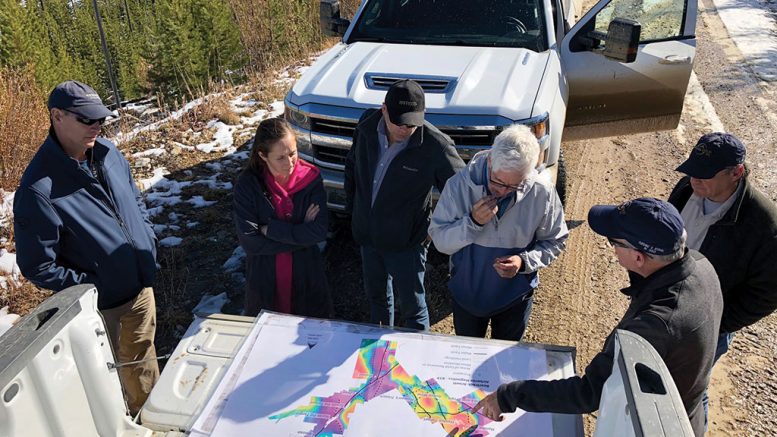
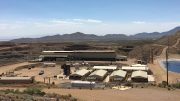
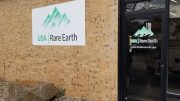
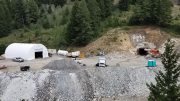
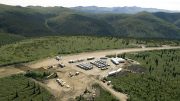
Be the first to comment on "US Snapshot: Eight companies active across the nation"